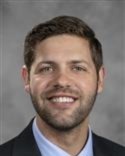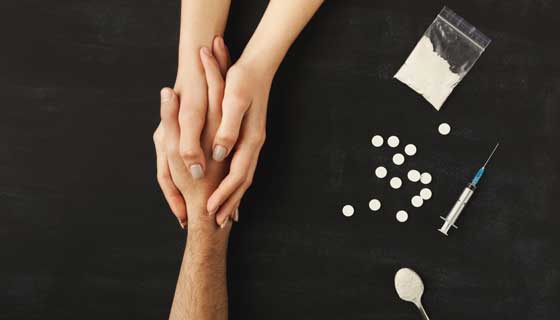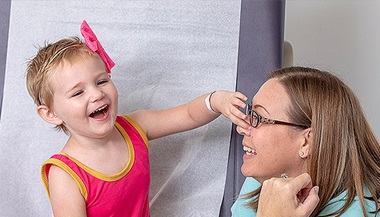Patient Story
Complex Regional Pain Syndrome: Adelaide's Story
Patient Story Highlights
- 13-year-old Adelaide struggled with debilitating knee pain for years, impacting her daily life and isolating her from her friends.
- Doctors diagnosed her with Complex Regional Pain Syndrome (CRPS), a chronic pain condition that involves nerve dysfunction.
- Adelaide was referred to the Chronic Pain Clinic at Johns Hopkins All Children's Hospital, where a team of specialists took a holistic approach to her treatment.
- The hospital used a nerve catheter to deliver a local anesthetic, allowing Adelaide to undergo intensive physical and occupational therapies without pain.
- After her treatment, Adelaide's pain significantly reduced, allowing her to return to her normal life and activities.

The photo from summer camp tells the story.
It depicts a joyful young girl racing down a hill in tandem with her friends — as fast as her legs will carry her.
She’s grinning from ear to ear.
Thirteen-year-old Adelaide has every reason to be a happy camper.
After suffering from years of debilitating pain, a journey that would ultimately lead her to Johns Hopkins All Children’s Hospital, she has finally found her footing again.
But answers haven’t come easily.
At the age of 8, Adelaide began experiencing intense pain in her knees, particularly her left one.
“It hurt her just to walk down the stairs,” says her mom, Elizabeth. “She couldn’t kneel in church, and she would cry in dance class.”
An orthopaedist diagnosed her with Sinding-Larsen-Johansson syndrome, a condition caused by swelling and irritation of the growth plate at the base of the knee cap. Think of it as “growing pains” on steroids.
Adelaide was sidelined from her activities, and received physical therapy. She got better.
But the pain came back.
Again and again.
Pain That Doesn’t Stop
Terrible pain would flare up for Adelaide several times a year. Each year, it seemed to get worse.
She would begin playing a sport or join an activity with friends, and then the crushing onset of pain would force her into stillness.
“It’s hard to describe the pain,” Adelaide says. “It ranged from really uncomfortable to very sharp … about an 8 or 9 on a scale of 1 to 10.”
The fear of pain began to dictate her choices.
It was isolating and devastating.
The family took Adelaide to doctor after doctor. Just touching her knee could bring her to tears. She would be placed in a cast and then a brace, she would endure painful therapy, the pain would subside for a time, and then the cycle would repeat.
Was this going to be Adelaide’s life? No one was offering any real solutions.
The pain was slowly crushing her spirit.
“It ranged from really uncomfortable to very sharp … about an 8 or 9 on a scale of 1 to 10.”
Adelaide
Complex Regional Pain Syndrome
Complex regional pain syndrome (CRPS) is a condition that involves chronic, excessive pain, usually in one limb. It may come after a trauma or injury, but not always.
CRPS is one of several pain syndromes included under the broader term, amplified musculoskeletal pain syndrome (AMPS). Other pain conditions covered by the term AMPS include juvenile fibromyalgia syndrome, chronic musculoskeletal pain, chronic widespread pain, reflex neurovascular dystrophy or myofascial pain syndrome.
“There is some dysfunction at the level of the nerve pathway — from the periphery to the spine to the brain,” says Giovanni Cucchiaro, M.D., director of Pain Services in the Department of Anesthesia at Johns Hopkins All Children’s Hospital.
“The nerves just keep firing these messages of ‘pain, pain, pain’ to the brain,” he says.
“The pain is controlling the brain rather than the brain controlling the pain.”
During a doctor visit early this year, a physician asked Adelaide’s mom if she had heard about the Chronic Pain Clinic at Johns Hopkins All Children’s Hospital.
“At first I was like, ‘I’m not interested in taking my 13-year-old to a pain clinic,’” Elizabeth says.
She didn’t want her child anywhere near prescription pain medications.
But that’s not how the program works.
The best treatment for chronic pain requires a holistic approach — to address not only the physical pain, but also the psychological aspects that accompany it. A team of specialists including physicians, physical therapists and a psychologist work together to personalize treatment in a way that allows a child to heal — often with surprising speed.
“Pain treatment is not just about locating where it hurts,” says William Frye, Ph.D., a pediatric psychologist in the pain clinic, “it’s also about all the things impacted by it, such as family and social life, worries and fears — especially fears about pain.”
After evaluating Adelaide, the pain team recommended the in-patient program. They were confident they could make a difference for her within about a week.
“We were at our wit’s end,” Elizabeth says. “And Adelaide was so motivated. She was so tired of hurting.”
Adelaide was admitted to the hospital, a bit unsure, but hopeful that she could heal.
Intensive physical and occupational therapies have been proven to treat chronic pain over the years — and those would be part of Adelaide’s treatment plan.
But what if there is so much pain that a child is unable to engage in therapy in a meaningful way?
Here’s one of the things that separates treatment at Johns Hopkins All Children’s from most other clinics around the country. At the beginning of the treatment, a small catheter is inserted near the site of the painful limb — to deliver a simple, local anesthetic.
“It serves to shut down the nerve system that goes to the extremity,” Cucchiaro says. “If we can numb the extremity, the child has no pain. So, they can do these therapies.”
Cucchiaro began using the nerve catheter many years ago while practicing on the west coast. He has seen the difference it can make for his patients, and he felt sure it could work for Adelaide.
Pain Therapy
Once the catheter was placed, it took a little time for Adelaide to adapt to the new sensation in her leg.
“It felt weird at first,” she says, “but it felt a lot better than the pain I had been feeling.”
With the frenzy of pain messages Adelaide’s brain had been receiving now effectively put on “mute,” she was able to focus on her therapies in a way that could produce results.
As she moved toward physical functioning, her brain took note.
Some of the old pain memories began to be re-written.
All the while, Frye was helping her to understand her pain, and giving her skill-based interventions to better manage it — including slow, diaphragmatic breathing, progressive muscle relaxation and meditation.
Each day, Adelaide gained more function and more confidence.
The day before discharge, the ultimate test … The anesthetic was stopped and the catheter removed.
“I was surprised by my progress,” Adelaide says. “There was a little discomfort, but the pain was gone.”
The week-long interruption of pain signals had perhaps allowed Adelaide’s sympathetic nervous system a sort of “re-set” back to baseline.
By her last day of treatment, Adelaide was able to scale three flights of hospital stairs with her therapist.
The pain that had been registering at a level of 8 or 9 was now down to a zero.
Life Without Pain
The day before Easter, Adelaide was discharged, feeling pain-free and renewed.
“We go into medicine to make people feel better,” Cucchiaro says, “so it’s an accomplishment of our ideal as physicians, to make a difference in a child’s life.”
Adelaide’s mom only wishes more medical professionals were as familiar with chronic pain — and a treatment that actually works.
“We wasted a lot of time not knowing what was wrong,” Elizabeth says. “I don’t want one more family to suffer.”
Adelaide has barely looked back.
Her summer adventures served as a kind of “victory lap” over the pain that had deprived her of so much.
Summer camp was packed with outdoor fun. And on a family trip to Maine, she indulged confidently in everything from hiking to rock climbing.
Now, as Adelaide begins the eighth grade, she’s looking to embrace the activities she loves, and the friends she has missed.
She is sure to be extra busy this year — living her very best life.
Adelaide's Team
Johns Hopkins All Children's Pain Management

Pain is complex and is as unique as each child we treat. Whether it is the result of an injury, a chronic illness or another cause, pain can affect all areas of life including school, mood, sleep, family life and everyday activities. The pain management program at Johns Hopkins All Children's Hospital in St. Petersburg, Florida, uses medications or procedures along with therapies such as psychotherapy, biofeedback, occupational and physical therapy solely dedicated to the management of pain.






